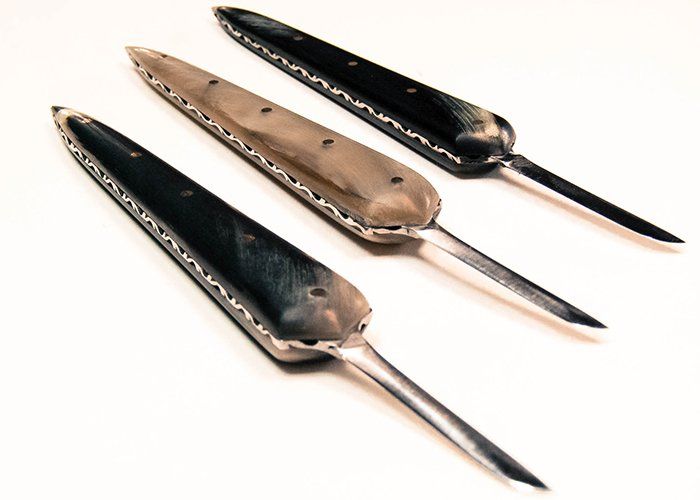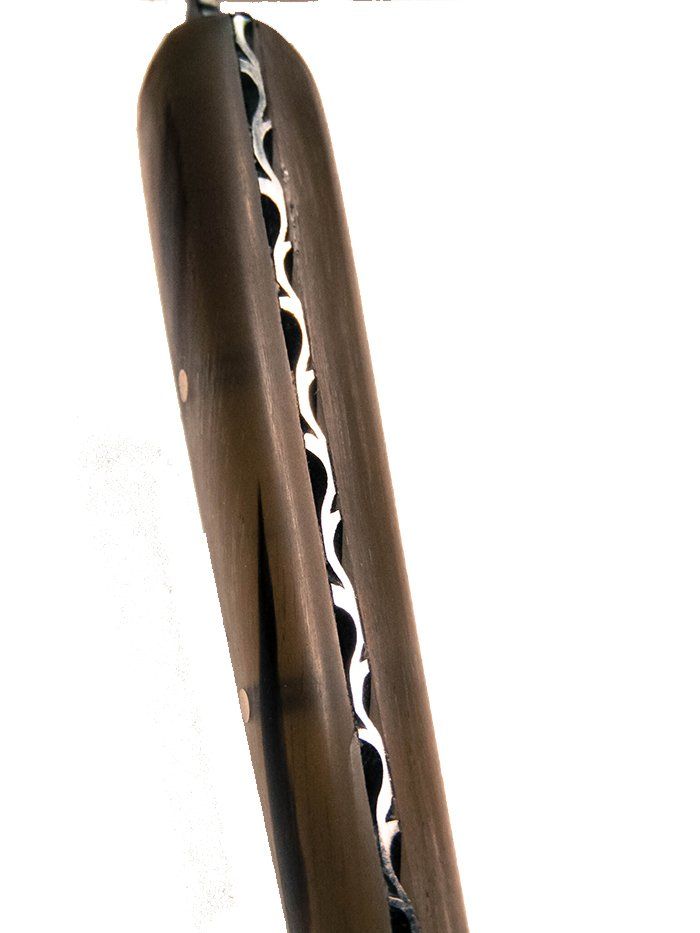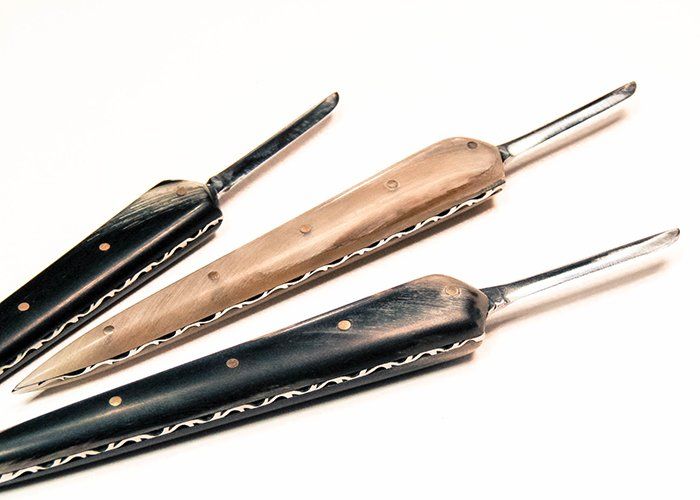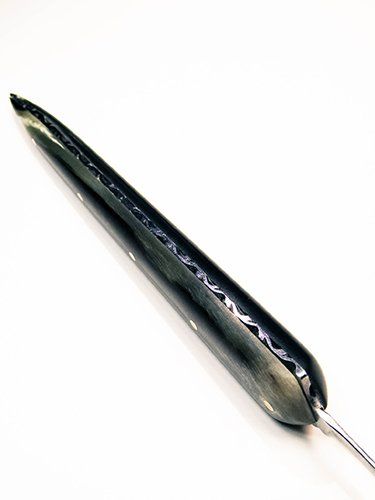The Scribe's most trustful companion
The Quill knife is, as the name suggests, a knife that is used to shape the feathers into pens for writing. Depictions of these special knives are found in countless miniatures, portraits and drawings dating back for centuries. Once an essential tool in the scribe toolbox (some would argue the most important because without it the pen could not be made), with the advent of metal nibs they ceased to be produced and soon forgotten. Until now.
A good Quill knife is still the essential tool for the calligrapher who wants to properly cut a pen from a feather. When properly cut, nothing compares to a quill as a writing instrument. In order to make a good pen, the knife needs to be comfortable to hold in one's hand, of the right weight and have an elongated and gradually thinner handle. The steel must be hard but relatively easy to sharpen, able to retain its cutting edge. Its short blade has to be thin but strong, curved on one of the blade's faces (typically on the right side) to allow it to easily follow curved cuts (which sides depends on whether the person is left or right handed).
With patience and some luck it is still possible to find a good, original Quill Knife in antiques shops or flea markets, but they are extremely rare and often expensive. Modern makers are difficult to find and their products are not always up to the task.
This is the reason why during the past 2 years I have researched and experimented with different shapes, steels and techniques trying to create a Quill Knife that is not only reliable and durable, but also unique and beautiful.
Each Quill Knife is 15.5 cm long and entirely handmade using mostly hand tools. The blade is 4cm (1.5”) long made from oil-hardening high-carbon tool steel, not stainless, very similar to the kind of steel used in Victorian era Quill Knives. This steel is slightly softer than the modern stainless variants, making honing easier for blades always razor-sharp.
The knife has a full length tang that runs to the very pointy end, making the knife extremely resistant while protecting the pointy butt from breaking. The entire length of the tang is decorated with a wavy floral motif inspired by the leaf patterns found in 15th century manuscripts. I plan to study and develop new decorations in the future.
The handle is composed of two genuine ram’s horn scales riveted with 5 brass pins, no glue or resins. Ram’s horn handles have been used to make traditional folding knives (Arrasojas) in Sardinia (my native island) from time immemorial; this is why I wanted to use it in my Quill Knives. Due to the natural origin of this material, each handle is unique in colours and effects. During my previous experiments I have also made handles using Ebony, Olive, Almond and Ox bone.
Each knife has its own unique wooden box.
© Attilio Medda 2021















